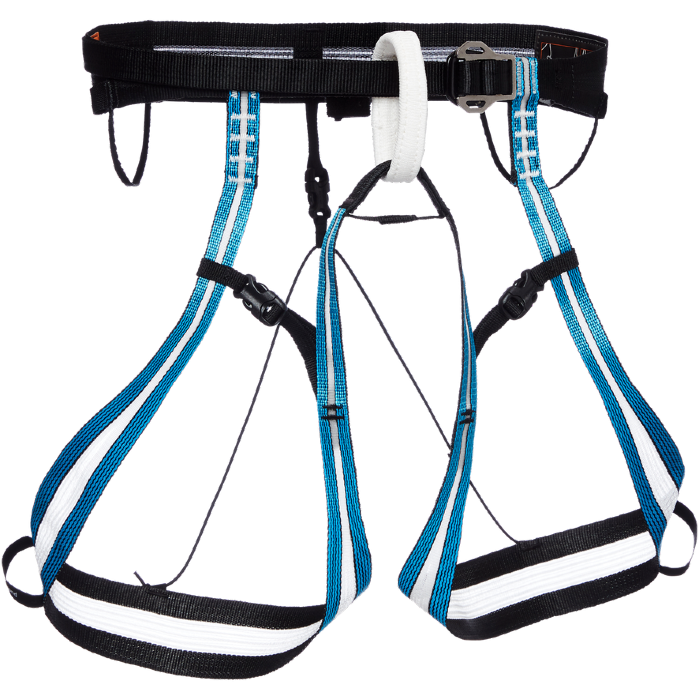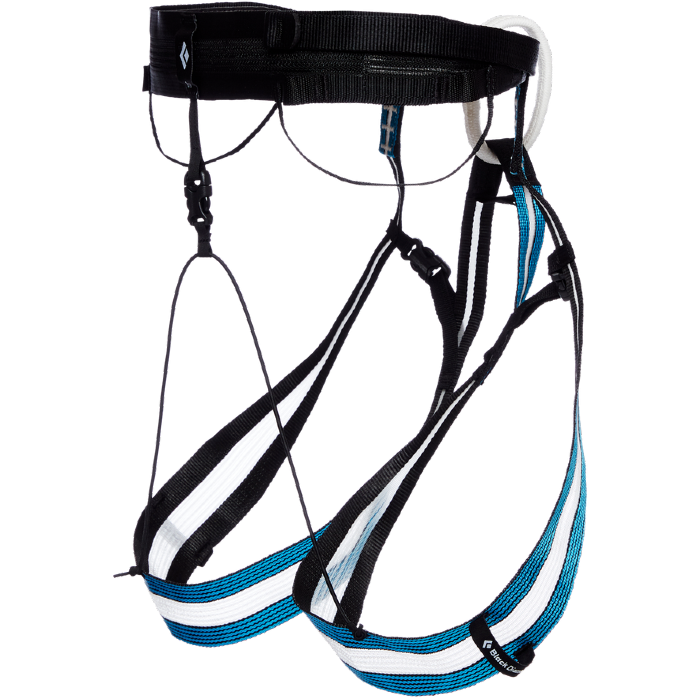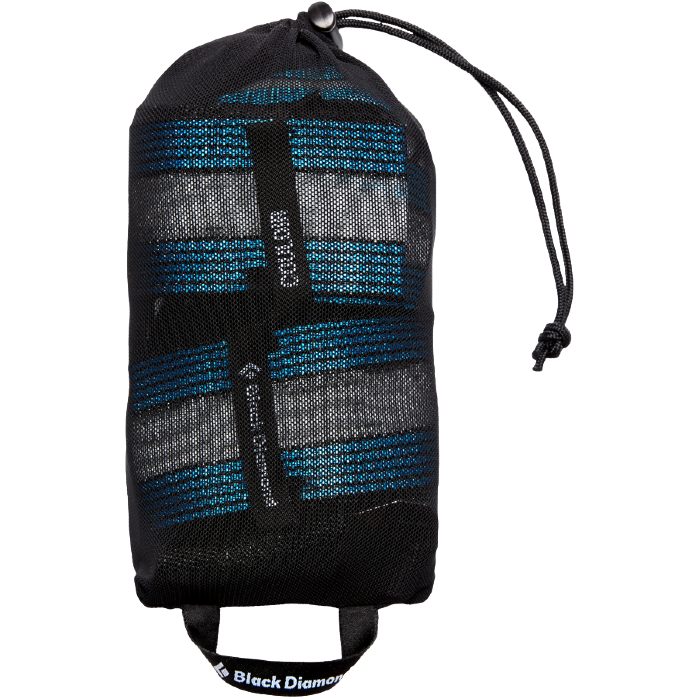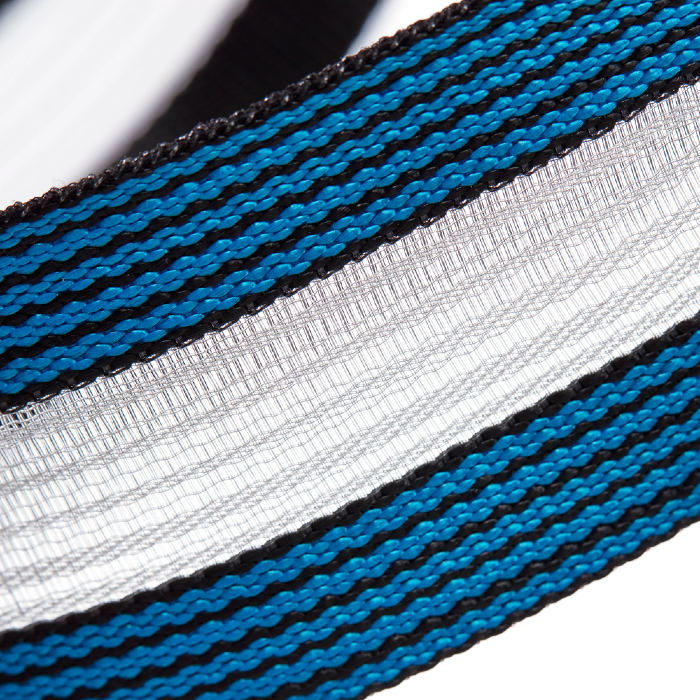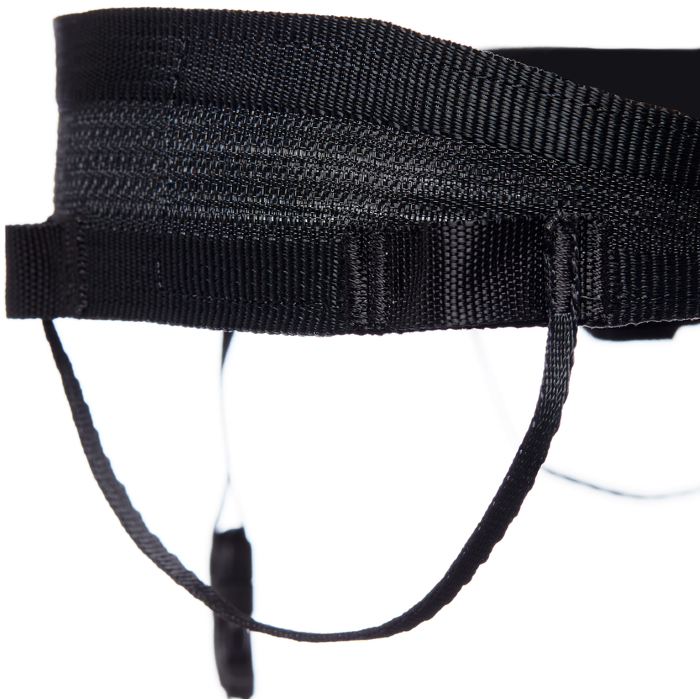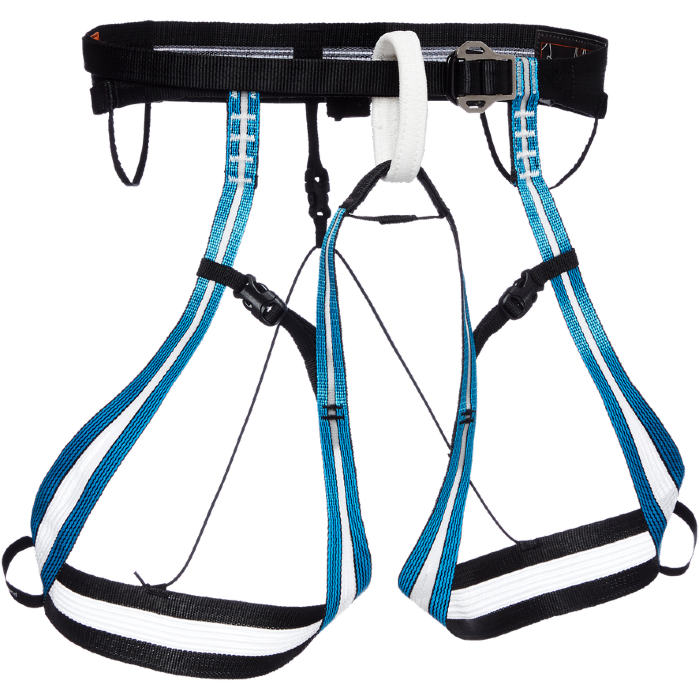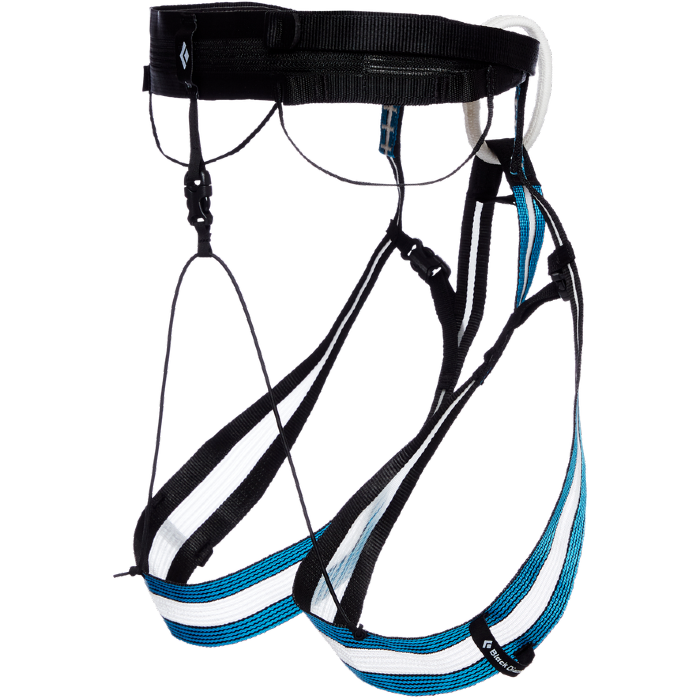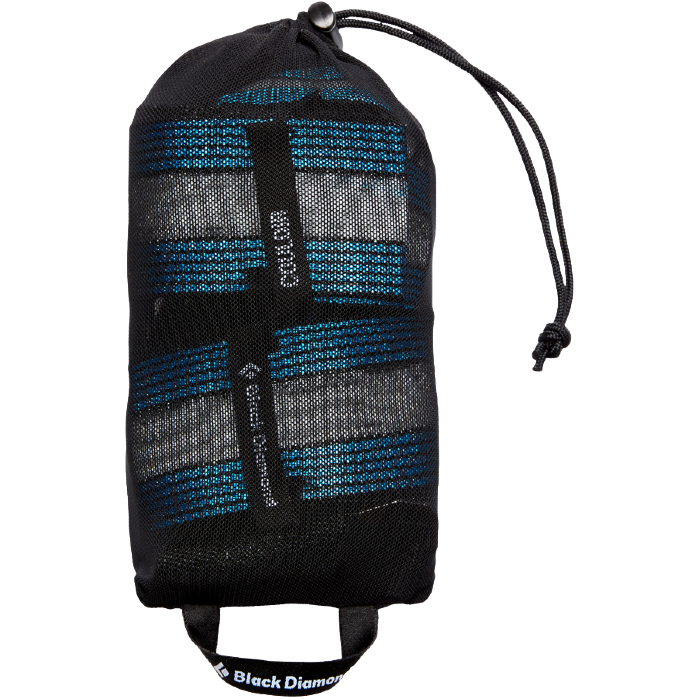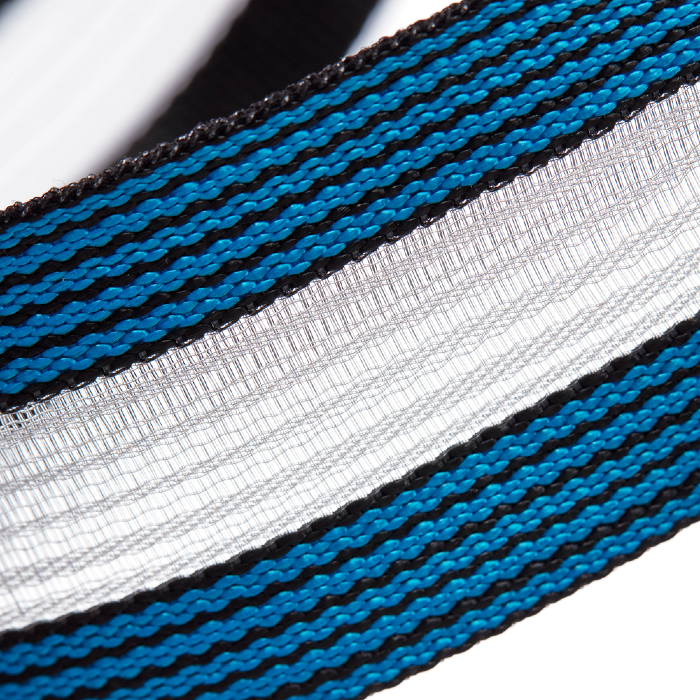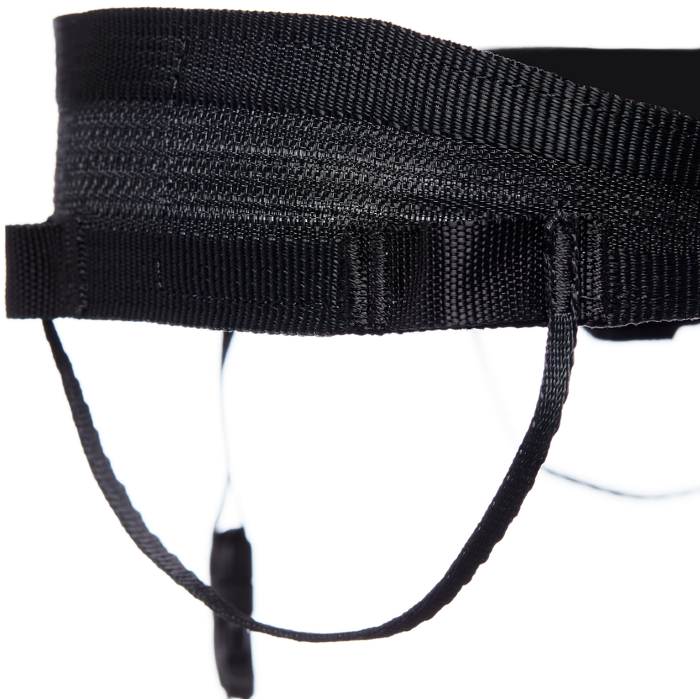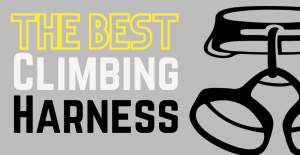Couloir
Description
For technical big mountain lines, crevassed ski terrain or moderate glacier climbs, the Black Diamond Couloir harness is a full-featured technical harness that packs down to the size of an orange and easily stashes in your pack or jacket pocket. Redesigned with a breathable, low-profile vari-width Dynex monofilament webbing that’s ultralight and durable, the Couloir comes with one speed buckle on the waist with easy-adjust wings and diaper-style leg loops that make for easy on and off while wearing skis or crampons. The Couloir also includes our patented Infinity Loop for belaying, which is durable, low profile, and eliminates the dreaded belay-loop-shift when the belay loop seam catches. Four Ice Clipper slots pair with an integrated ice screw slot in each leg loop to reduce clanking during long approaches and flat glacier travel, and two webbing gear loops secure cordalettes, extra biners and other essential gear.
For technical big mountain lines, crevassed ski terrain or moderate glacier climbs, the Black Diamond Couloir harness is a full-featured technical harness that packs down to the size of an orange and easily stashes in your pack or jacket pocket. Redesigned with a breathable, low-profile vari-width Dynex monofilament webbing that’s ultralight and durable, the Couloir comes with one speed buckle on the waist with easy-adjust wings and diaper-style leg loops that make for easy on and off while...
read moreRetail price
When you click a link below and then checkout online, no matter what you buy (climbing gear or not), we get a small commission that helps us keep this site up-to-date. Thanks!
Weight (g)  | 135 g BD doesn't provide the weights for other sizes so we're working on gathering this info by hand, stay tuned! |
| Fit | Unisex |
| Sizes | XS, S, M, L, XL, XXL |
Gear Loops  | 2 Gear loops |
Ice Clip Slots  | Yes, 4 |
| Belay / Tie-In | One Loop |
| Waist Buckle Type | Quick Adjust |
| Leg Buckle Type | Clip |
| Drop Seat | Yes |
Haul Loop  | No |
| Certification | |
| Size Chart | XS-S
Waist: 60-76 cm / 24-30 in
Legs: 43-51 cm / 17-20 in S-M
Waist: 67-84 cm / 26-33 in
Legs: 48-60 cm / 19-24 in M-L
Waist: 76-91 cm / 30-36 in
Legs: 53-66 cm / 21-26 in L-XL
Waist: 84-99 cm / 33-39 in
Legs: 58-69 cm / 23-27 in XL-XXL
Waist: 91-112 cm / 36-44 in
Legs: 64-86 cm / 25-34 in |
No reviews yet.
How to use Carabiners and Quickdraws, warnings, inspection, care and maintenence with instructional pictures.
A pictoral representation of UIAA-105 and EN-12277 standards for harnesses.
The UIAA equipment standard provides a baseline for equipment performance in a test lab under controlled conditions on new equipment. Although these test conditions are relevant to the conditions encountered climbing, conditions encountered at the crags and the condition of the equipment are equally important. This recommendation from the UIAA member federation The British Mountaineering Council (BMC) provides vital equipment information that is NOT explicitly addressed in the standard, particularly failure modes of the equipment and recommendations for the use, inspection, maintenance, and retirement of equipment.


